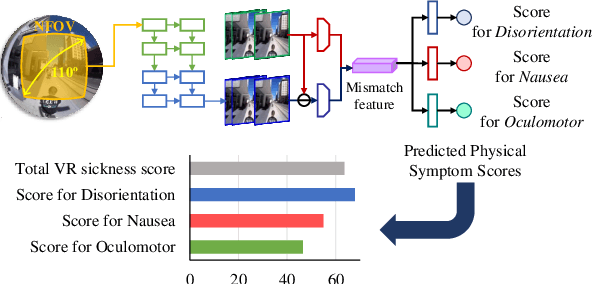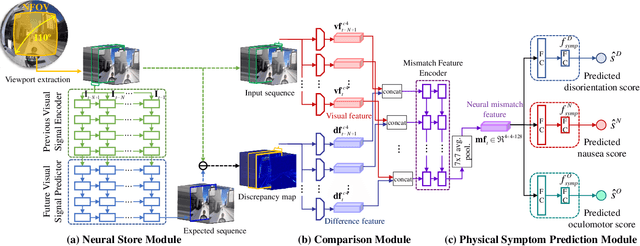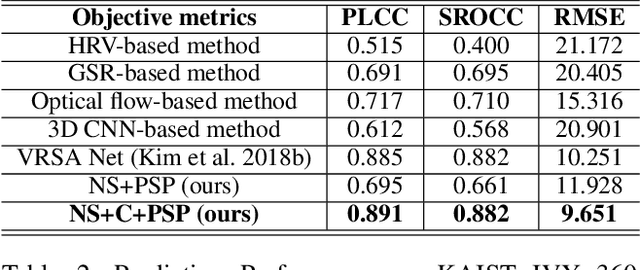Towards a Better Understanding of VR Sickness: Physical Symptom Prediction for VR Contents
Paper and Code
Apr 14, 2021



We address the black-box issue of VR sickness assessment (VRSA) by evaluating the level of physical symptoms of VR sickness. For the VR contents inducing the similar VR sickness level, the physical symptoms can vary depending on the characteristics of the contents. Most of existing VRSA methods focused on assessing the overall VR sickness score. To make better understanding of VR sickness, it is required to predict and provide the level of major symptoms of VR sickness rather than overall degree of VR sickness. In this paper, we predict the degrees of main physical symptoms affecting the overall degree of VR sickness, which are disorientation, nausea, and oculomotor. In addition, we introduce a new large-scale dataset for VRSA including 360 videos with various frame rates, physiological signals, and subjective scores. On VRSA benchmark and our newly collected dataset, our approach shows a potential to not only achieve the highest correlation with subjective scores, but also to better understand which symptoms are the main causes of VR sickness.
 Add to Chrome
Add to Chrome Add to Firefox
Add to Firefox Add to Edge
Add to Edge